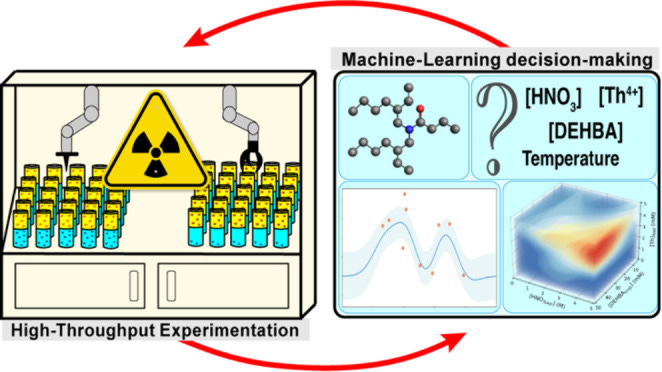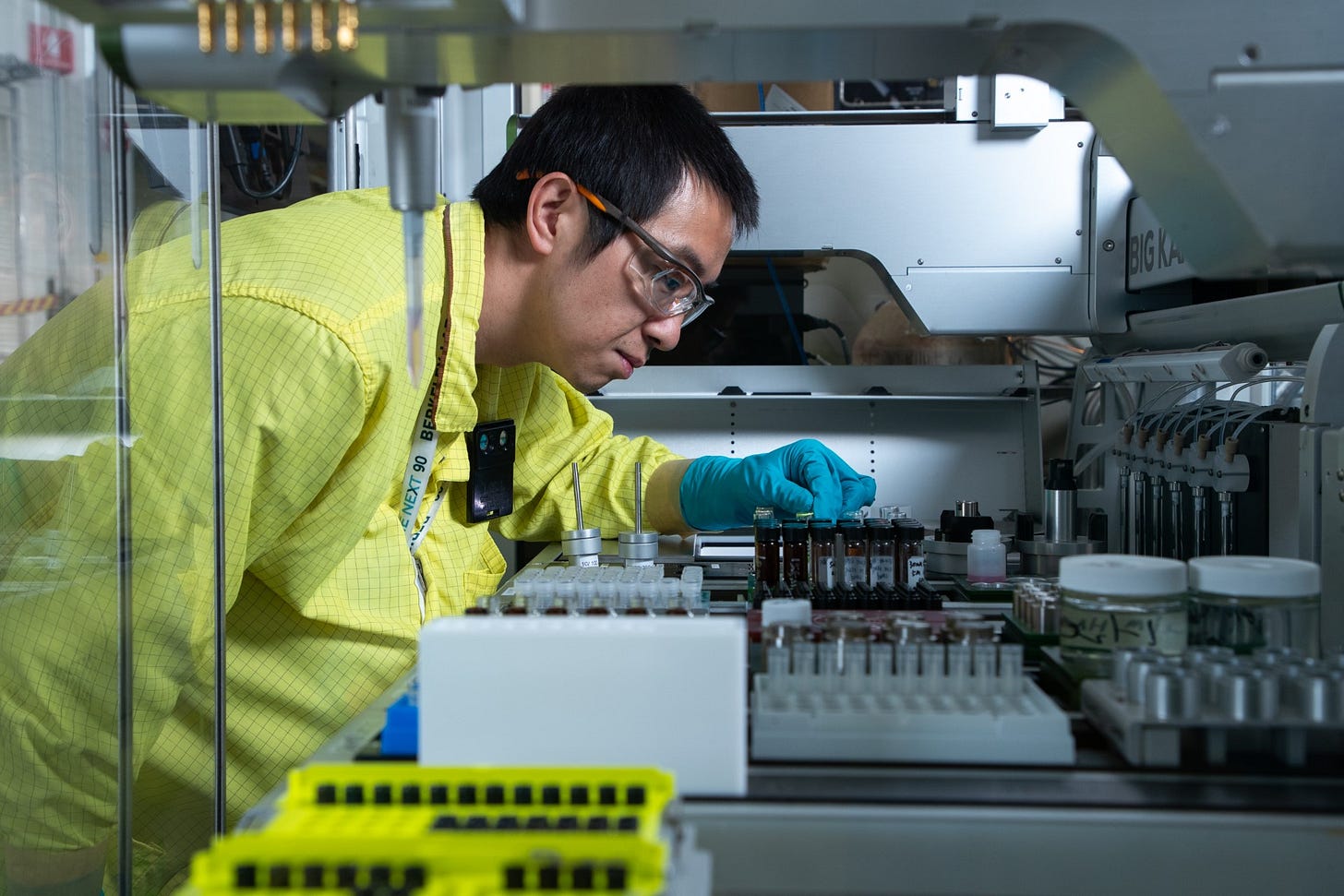AI Agents in the Lab: The Quest to Defy Expectations in Clean Energy
An exciting conversation with Professor Schrier and team at Fordham University
We live in a world where research budgets are being cut, and titles of research are mocked as waste by people who know little about what the research actually is doing. Too often, people simply don’t understand how an obscure sounding research project might end up delivering breakthroughs we will all rely on. At Taos Research Corporation, part of our mission is to bring under-told stories from these exciting areas of research to more people. This is a story about some of that valuable work, and the people who do it.
Recently my brother Damon Palmer and I had the honor and privilege to visit Professor Joshua Schrier’s chemistry lab at Fordham University to talk about how AI and agents are contributing meaningfully to modern chemistry workflows. Dr. Schrier is one of the leading voices in computational physical chemistry today. He was the chair of the Department of Chemistry at Haverford College, and later joined Fordham University, where he holds the Kim B. and Stephen E. Bepler Chair in Chemistry. We enjoyed a fascinating, and open conversation with him and with Dr. Baosen Zhang, a thoughtful postdoc in the group. What tied the day together for me was the way two big themes came into focus:
How AI agents and advanced ML models built on large curated datasets are helping solve hard “chemical separation” problems, which play a key role in clean energy technologies; and
How computational chemistry (including AI/ML) can help scientists focus the search for exceptional molecules and materials, not just optimize average ones.
Lanthanides, Actinides & AI agents?
One of my personal learnings from the conversation is that the road to wind turbines, electric vehicles, and safer nuclear reactors runs through challenging problems in chemistry. Please pardon my abbreviated and superficial description here, but two families of chemical elements (which I can assure you are not on my everyday conversation card), are known as the lanthanides and the actinides. These two families are critical to this story.
Lanthanides such as neodymium and dysprosium play a key role in the high-performance magnets at the heart of turbines and motors. The radioactive actinides such as uranium and thorium are central to nuclear fuel. Both groups are part of the so-called “f-block” elements (or simply the “f-elements”) of the periodic table. These are the last two rows in the table you see below (chemists use the term because the outermost electrons of these elements occupy what are called f-orbitals).
The problem is that the chemical properties of the lanthanides and actinides are so similar that pulling them apart (termed “separation”) is painstaking. Chemists rely on solvent extraction and ion exchange, processes that must be run in long trains of repeated steps to get the needed purity. Better separation techniques could mean more reliable clean energy technologies over time.
That is the setting where large datasets, shared archives, and AI methods are beginning to matter. Los Alamos National Laboratory (LANL) in Los Alamos New Mexico (yes that Los Alamos) runs a project called SeparationML, which pairs machine learning with automated extraction experiments. The Separation Archive for f-Elements (SAFE) database created by LANL in partnership with universities provides a public data backbone for lanthanide and actinide chemistry, so groups can share high quality, curated data in common formats.
Better separation techniques could mean more reliable clean energy technologies over time.
Professor Schrier and the team at Fordham have played a key role in creating SAFE and contributing data to it. High quality data in turn opens the door to computational models that can suggest promising conditions to test, cutting down on time and cost of discovery of new separation techniques.
The pursuit of the exceptional
There are big ideas here, and Professor Schrier has helped pioneer them. In 2023, his paper, In Pursuit of the Exceptional: Research Directions for Machine Learning in Chemical and Materials Science, helps explain the deeper motivation. Most machine learning approaches are tuned to find averages. They interpolate well between known data points. That is useful for optimization, but it is not enough for discovery. What matters most in chemistry and materials are the outliers: superconductors with unusually high transition temperatures, or materials that are unexpectedly hard. These exceptional cases often reveal new physical effects or new combinations that, as Schrier states, can “defy expectations.” Historically they were found by accident. The challenge now is to guide discovery toward them more deliberately. That requires different ways of using data and models. It means focusing on the edges of the distribution, looking for surprises, and folding those searches into automated workflows so the search can move quickly without losing human judgment.
Most machine learning approaches are tuned to find averages. They interpolate well between known data points. That is useful for optimization, but it is not enough for discovery. What matters most in chemistry and materials are the outliers: superconductors with unusually high transition temperatures, or materials that are unexpectedly hard. These exceptional cases often reveal new physical effects or new combinations that as Schrier states can “defy expectations.”
This perspective carries over to separations. We need conditions that stand out, not just small tweaks on what already exists. AI agents, when paired with good data and careful experiments, give scientists a way to search more widely, systematically, and more creatively for those standout solutions.
Our visit to the lab at Fordham
That was the spirit of the discussion in Fordham’s lab. Dr. Zhang showed us how they are using agentic workflows for separations and molecule discovery. They keep their tools light, building directly in Python rather than depending on heavy frameworks like LangChain or LangGraph. The focus is on clarity and flexibility, not on unnecessary complexity. Our conversation was about practical issues: how to keep datasets clean, how to design flows that are reliable and easy to debug, and how to link the computational side to the chemistry in meaningful ways.

It was also a reminder of how interdisciplinary this space is becoming. Chemistry, data science, robotics, and physics all come together. Shared archives like SAFE only exist because groups agreed to pool their data. National labs like Los Alamos are investing in AI-driven workflows. Academic groups like Schrier’s are working at the frontier of computational methods while still staying grounded in real laboratory practice. This mix is what will move the field forward.
Taos Research and next steps
At Taos Research we are pushing on AI and agent tools and architectures to aid this kind of science. Our aim is to make them simple enough for researchers to adopt, but powerful enough to handle the complexity and specificity of modern science workflows. One of the key steps is strengthening connections with academic labs like Professor Schrier’s, national labs like LANL in Los Alamos, and others like the Santa Fe Institute who emphasize interdisciplinary study and complex systems.
I am deeply grateful to Professor Schrier and Dr. Zhang for welcoming us into their lab and for sharing their precious time and perspective. The visit reinforced for me that the future of science, and the applications to everyday life it delivers, will not be driven by one discipline alone. It will require those reviewing and deciding funding to seek multidisciplinary scientific expertise. It will be built by people who open their doors, work across borders and barriers, and search for the exceptional.
Further reading and links
SAFE: Separation Archive for f-Elements https://safe.lanl.gov/
Augustine, L. J., Yang, P., Schrier, J., et al. “Advancing Rare-Earth (4f) and Actinide (5f) Separation through Machine Learning and Automated High-Throughput Experiments”
https://scholar.google.com/scholar?q=Advancing+Rare-Earth+(4f)+and+Actinide+(5f)+Separation+through+Machine+Learning+and+Automated+High-Throughput+Experiments
Schrier, J., Norquist, A. J., Buonassisi, T., Brgoch, J. “In Pursuit of the Exceptional: Research Directions for Machine Learning in Chemical and Materials Science”
https://scholar.google.com/scholar?q=In+Pursuit+of+the+Exceptional+Research+Directions+for+Machine+Learning+in+Chemical+and+Materials+Science
Schrier, J. Introduction to Computational Physical Chemistry, https://taosresearch.ai/learning/introduction-to-computational-physical-chemistry
Dr. Baosen Zhang’s microblog: https://microblog-baosen.blogspot.com/




